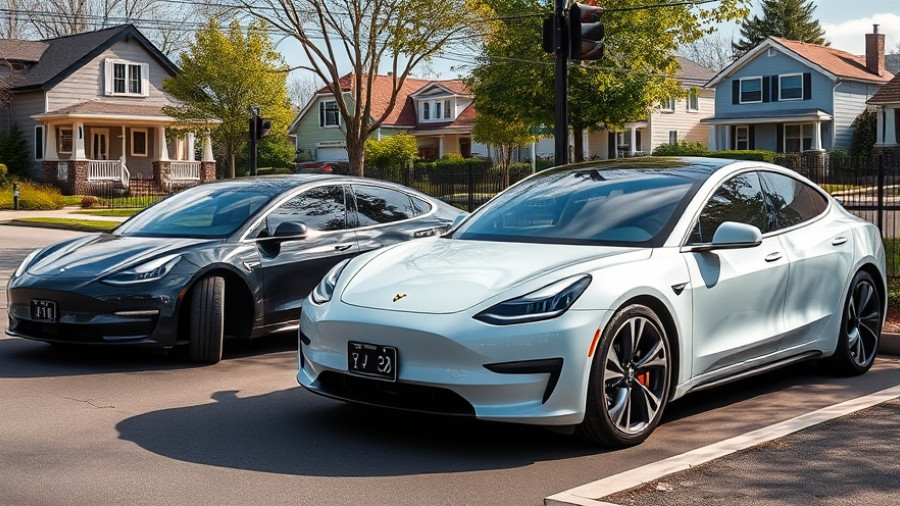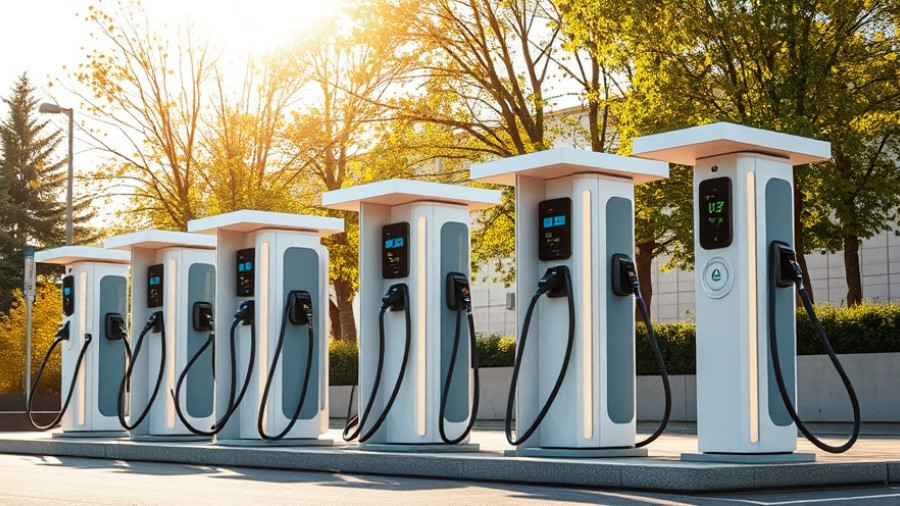
Prague's Groundbreaking Initiative for Electric Mobility
The Prague City Council has taken a significant step towards enhancing the city's electric vehicle infrastructure by approving an ambitious project to install up to 1,500 publicly accessible AC charging stations. This investment is part of a widespread effort to promote electric mobility, particularly for residents who may not have the capacity to charge their vehicles at home.
Transforming Urban Living with Sustainable Charging Solutions
Set to cost approximately 493 million Czech koruna (around 20 million euros), the initiative aims to embed electric vehicle (EV) charging capability throughout the Czech capital. Although specific locations and a timeline have yet to be determined, city planners indicated that charging stations are to be strategically placed in residential areas. This consideration stems from the desire to enable regular overnight charging directly from public streets, thus presenting a convenient solution for daily commuters.
The Link Between EV Charging and Air Quality Improvement
As part of a wider strategy to combat climate change and improve urban air quality, Prague's charging infrastructure expansion reflects the city's commitment to reducing greenhouse gas emissions and pollutants arising from vehicular traffic. According to Zdeněk Hřib, the First Deputy Mayor for Transport, the charging project is crucial in making electric mobility accessible to all, thereby preventing it from being a luxury reserved for the few. Hřib stated, "Building a charging infrastructure is not just a technological project. It is a concrete step towards a cleaner and healthier city where people can live well. Investing in an emission-free future makes ecological, economic, and social sense."
Future-Forward: Integrating Electric Mobility into Urban Infrastructure
Prague is not just stopping at public charging stations; it has plans for a broad overhaul of its transportation systems. Earlier this year, the Prague Public Transport Company signed a framework agreement for the procurement of 70 electric trolleybuses, and there are ongoing discussions about making e-taxis mandatory for new vehicles starting in 2029. These efforts align with a growing global shift toward urban environments powered by green technologies.
A Combined Strategy: Lamppost Charging Points
Complementing the 1,500 new AC charging stations, plans announced last autumn by the company responsible for public lighting in Prague include creating over 1,000 lamppost charging points, each equipped with a dedicated parking space for electric vehicles by 2026. This development signals a thoughtful integration of existing urban infrastructure with innovative solutions to facilitate cleaner transportation options.
Revolutionizing Urban Space and Mobility: What It Means for Residents
For homeowners and local businesses eyeing solar and green energy solutions, these advances in charging infrastructure signal an increasing reliance and desire for electric mobility in urban living. As charging stations become more accessible, residents will likely see enhanced property values and a reduction in the costs associated with traditional fuel.
Expanding Opportunities for Eco-Conscious Living
The drive toward electric vehicle infrastructure marks an invaluable investment in sustainable urban living that will foster not only cleaner air but also a community that embraces green technologies. More than just a project, this initiative represents a commitment to a smarter, healthier, and more sustainable future for Prague's residents.
In conclusion, the expansion of Prague’s electric vehicle charging infrastructure opens the door to a myriad of opportunities for homeowners and businesses alike. As cities around the world navigate the complexities of climate change, Prague’s initiatives serve as a model for integrating green technologies, creating an environment conducive to innovation and sustainable living.
 Add Row
Add Row  Add
Add 



Write A Comment